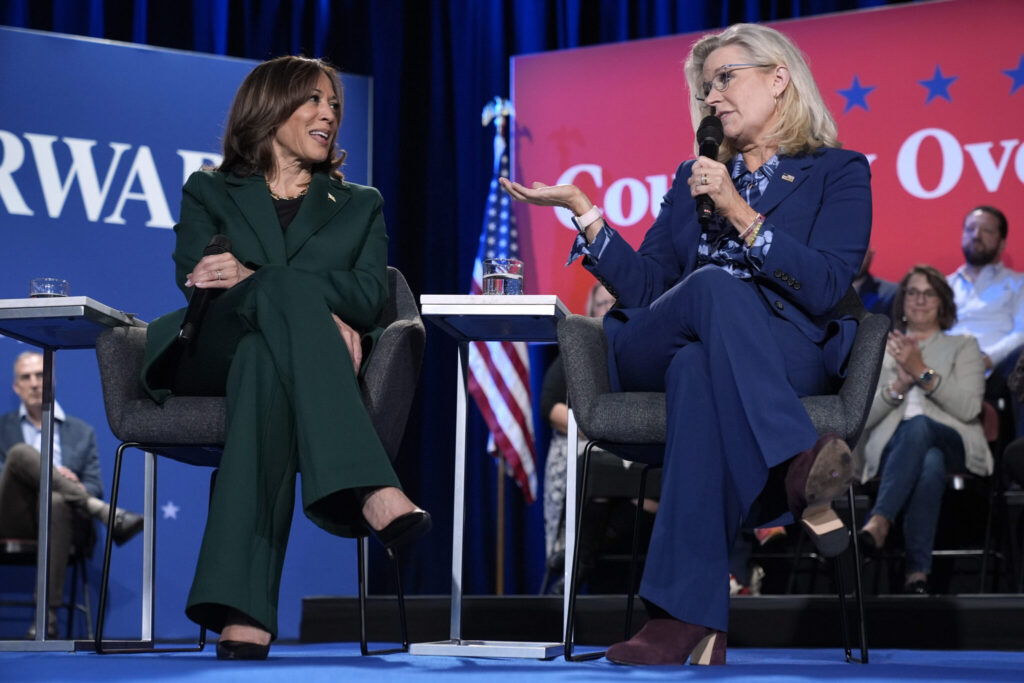Kamala Harris 2024/ Trump 2024 campaign strategy/ U.S. election 2024/ battleground states/ Trump vs Harris/ Newslooks/ J. Mansour/ Morning Edition/ As the 2024 presidential race enters its final days, Donald Trump and Kamala Harris pursue sharply different strategies. Trump focuses on energizing his base of hardcore supporters, while Harris courts undecided moderates, suburban women, and swing voters. Both are aiming to secure key battleground states before November 5.

Trump and Harris Target Different Voter Bases as Election Day Approaches – Quick Look
- Kamala Harris aims for moderate and suburban voters, focusing on reproductive rights and democracy.
- Donald Trump is focusing on his core base, particularly young, low-propensity voters, with an emphasis on the economy and anti-immigrant rhetoric.
- Both campaigns are targeting swing states like Pennsylvania, Michigan, and Georgia, essential for victory.
- Harris employs a traditional approach, while Trump uses unconventional methods such as podcasts and viral content.
- The election is expected to be decided by a narrow margin in key battlegrounds.
Trump Rallies Loyalists, Harris Courts Moderates in Final Election Push
Deep Look
As the 2024 presidential campaign races toward the November 5 finish line, Donald Trump and Kamala Harris are deploying vastly different strategies to energize the voter blocs they need to win. While Trump is focusing on his base of devoted supporters, Harris is targeting undecided voters and moderates, hoping to flip critical battleground states.
Trump’s Base Strategy
Trump’s campaign has largely moved away from the traditional approach of broadening his message to appeal to moderate voters. Instead, his team is zeroing in on energizing his base of hardcore partisans, particularly younger men across all racial demographics. This strategy involves fiery rhetoric, tough talk, and creating viral moments aimed at online audiences.
In Pennsylvania, for example, Trump made headlines by serving French fries at a closed McDonald’s, part of a broader effort to engage voters in unconventional ways. His campaign appearances have included podcasts, sporting events, and social media-friendly moments to rally support from low-propensity voters who don’t typically engage in politics through traditional media.
Trump’s political director, James Blair, explained that the campaign isn’t ignoring swing voters, but instead believes that economic concerns are already motivating this group to support Trump. “The economy’s motivating those people. Those people overwhelmingly think that they’re worse off than they were four years ago,” Blair said.
Trump’s aggressive focus on his loyal base, including younger working-class Hispanic and Black men, reflects his confidence in doubling down on those who supported him in 2020. His appearances at events like football games and mixed-martial arts fights put him in front of audiences that typically have lower voter engagement.
While Trump’s campaign hasn’t tailored its messaging for moderates or swing voters, it has created viral moments like his visit to a McDonald’s, further casting doubt on Harris’ economic credentials by referencing her past employment at the fast-food chain.
Harris Courts Moderates and Women
Meanwhile, Vice President Kamala Harris is using a more traditional campaign approach. Her team is targeting undecided voters, moderate Republicans, and suburban women. Harris’ strategy involves in-person rallies, digital ads, and door-knocking efforts to reach key voting blocs.
Harris’ campaign sees Republican women, especially those who supported former GOP candidate Nikki Haley, as potential voters who might be turned off by Trump’s extreme rhetoric. Her team is also emphasizing democracy, reproductive rights, and economic security to appeal to college-educated suburban voters and moderates who may still be undecided.
In Pennsylvania, Harris campaigned alongside former Republican congresswoman Liz Cheney, a stark contrast to Trump’s fiery rallies. The vice president’s team sees this as a critical part of her persuasion strategy, especially with only 10% of voters in key battleground states still up for grabs.
David Plouffe, a senior adviser for Harris, acknowledged that winning requires a multifaceted strategy. “This would all be a simpler exercise if you can focus just on one voter cohort,” Plouffe said. “You can’t. And you’ve got to make sure you’re doing well enough with all of them.”
Starkly Different Campaign Messages
Both candidates’ strategies reflect their core personalities and platforms. Harris, a former U.S. senator and the first woman to serve as vice president, has focused on protecting democracy and reproductive rights while building a Cabinet that includes diverse perspectives. Trump, on the other hand, promises to fight for the working class while vowing retribution against his political enemies, should he regain the presidency.
In addition to targeting moderate voters, Harris is emphasizing her track record and promising to protect reproductive rights, an issue of deep importance to women in key battleground states like Georgia and Michigan, where abortion restrictions have been implemented after the Supreme Court’s 2022 decision to overturn Roe v. Wade.
Trump, by contrast, continues to attack his political adversaries and reject mainstream media outlets. He has refused interviews with traditional news programs like “60 Minutes” and declined to debate Harris unless it was hosted by Fox News. He has also been vocal about his grievances with the political establishment, often launching personal attacks against figures like former House Speaker Nancy Pelosi and Rep. Adam Schiff.
The Focus on Battleground States
Both campaigns are focusing their final efforts on a familiar map of seven battleground states: Michigan, Pennsylvania, Wisconsin, Arizona, Georgia, Nevada, and North Carolina. These states are expected to decide the election, just as they did in 2020.
While Trump remains focused on his base, Harris is actively trying to win over undecided and swing voters in these states. Her campaign believes that a small shift in support from suburban women and moderate Republicans could be enough to win states like Pennsylvania and Michigan, where margins are expected to be tight.
Final Stretch
As the race enters its final days, both candidates are working furiously to energize their coalitions. Trump’s unconventional approach relies on viral moments and direct appeals to his loyalists, while Harris is focused on persuading moderates and undecided voters with more traditional methods. The election’s outcome will depend on which strategy resonates more effectively with voters in the final push to November 5.







